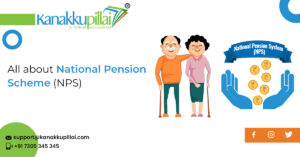![]()
Utilizing Plastic Credits for Sustainable Business Practices in India
Plastic pollution is a pressing global environmental challenge, and India is no exception. With a significant reliance on single-use plastics, the country faces severe consequences in terms of environmental degradation and health risks. To address this issue, businesses can play a pivotal role by incorporating plastic credits into their sustainability strategies. Plastic credits are a market-based approach that allows organisations to offset their plastic footprint by investing in initiatives that reduce or manage plastic waste. In this blog, we will explore how businesses in India can embrace Leveraging Plastic Credits for Sustainable Business Practices in India.
1. Understanding Plastic Credits:
Plastic credits operate on a principle similar to carbon credits. Companies can invest in projects that either prevent the generation of plastic waste or facilitate its proper disposal and recycling. These projects, often located in regions with high plastic pollution, contribute to a net reduction in plastic entering the environment. Companies earn plastic credits based on the volume of plastic they prevent or manage, and these credits can then be traded or retired to demonstrate a company’s commitment to plastic neutrality.
2. Key Steps for Businesses to Incorporate Plastic Credits:
Assess and Quantify Plastic Footprint:
Before businesses can effectively incorporate plastic credits into their sustainability strategies, they need to understand and quantify their plastic footprint. This involves assessing the amount of plastic used in their operations, packaging, and supply chains. This initial step is crucial for setting meaningful reduction targets and identifying areas where leveraging plastic credits for sustainability can have the most impact.
Set Reduction Targets:
Once the plastic footprint is assessed, businesses should set realistic and measurable reduction targets. These targets can be both absolute (reducing the total amount of plastic used) and intensity-based (reducing plastic use per unit of production). Plastic credits should be seen as a complement to, not a substitute for, direct efforts to reduce plastic consumption.
Invest in Plastic Reduction Projects:
Companies can partner with or invest in projects that focus on plastic waste reduction, recycling, and sustainable alternatives. These projects may include initiatives such as beach clean-ups, community recycling programs, or investments in innovative plastic alternatives. By supporting such projects, businesses earn plastic credits that align with their reduction targets.
Collaborate with NGOs and Government Initiatives:
Collaboration with non-governmental organisations (NGOs) and government initiatives is essential for the success of plastic credit programs. These partnerships can help businesses identify credible and impactful projects, ensure transparency in credit generation, and navigate regulatory frameworks related to plastic waste management.
Educate and Involve Stakeholders:
Businesses should actively involve their stakeholders, including employees, customers, and suppliers, in their plastic credit initiatives. Educating these groups about the importance of plastic neutrality and the role of plastic credits can generate support and enhance the overall impact of sustainability efforts.
Transparent Reporting:
Transparency is critical in demonstrating a company’s commitment to sustainability. Businesses should regularly report their plastic credit activities, detailing the projects supported, the volume of plastic credits earned, and how these credits contribute to the overall reduction of plastic pollution. Clear and transparent communication builds trust among stakeholders and enhances the credibility of sustainability initiatives.
Incorporate Circular Economy Practices:
To create a more sustainable and resilient system, businesses should explore circular economy practices. This involves designing products and packaging with recycling and reuse in mind. By closing the loop on plastic products, companies can further reduce their dependence on virgin plastic and enhance the effectiveness of their plastic credit initiatives.
Challenges and Considerations:
While leveraging plastic credits sustainable offers a promising avenue for businesses to address their plastic footprint, several challenges and considerations must be acknowledged:
Credibility of Projects:
Ensuring the credibility and effectiveness of the projects supported is crucial. Businesses should carefully vet and select projects that align with established standards and have a proven track record of positive impact.
Regulatory Landscape:
The regulatory landscape for plastic credits is still evolving. Businesses need to stay informed about local and national regulations related to plastic waste management to ensure compliance and contribute to broader industry initiatives.
Market Dynamics:
The market for plastic credits is in its early stages, and the dynamics may change as it matures. Companies should closely monitor market developments, engage with stakeholders, and adapt their strategies accordingly.
Public Perception:
Public perception of plastic credits can influence their effectiveness. Businesses should be transparent about their initiatives and avoid using plastic credits as a substitute for direct reduction efforts. Engaging with customers and the community can help build understanding and support.
Conclusion: Utilizing Plastic Credits for Sustainable Business Practices in India
Incorporating Leveraging Plastic Credits for Sustainable Strategies is a proactive and innovative approach for businesses in India to address the plastic pollution crisis. By quantifying, reducing, and offsetting their plastic footprint through strategic investments in impactful projects, companies can contribute to a cleaner environment and demonstrate their commitment to sustainable business practices. As the plastic credit market continues to evolve, businesses that embrace this approach early on position themselves as leaders in the journey towards a plastic-neutral future, fostering a circular economy that minimises the environmental impact of plastic consumption.





